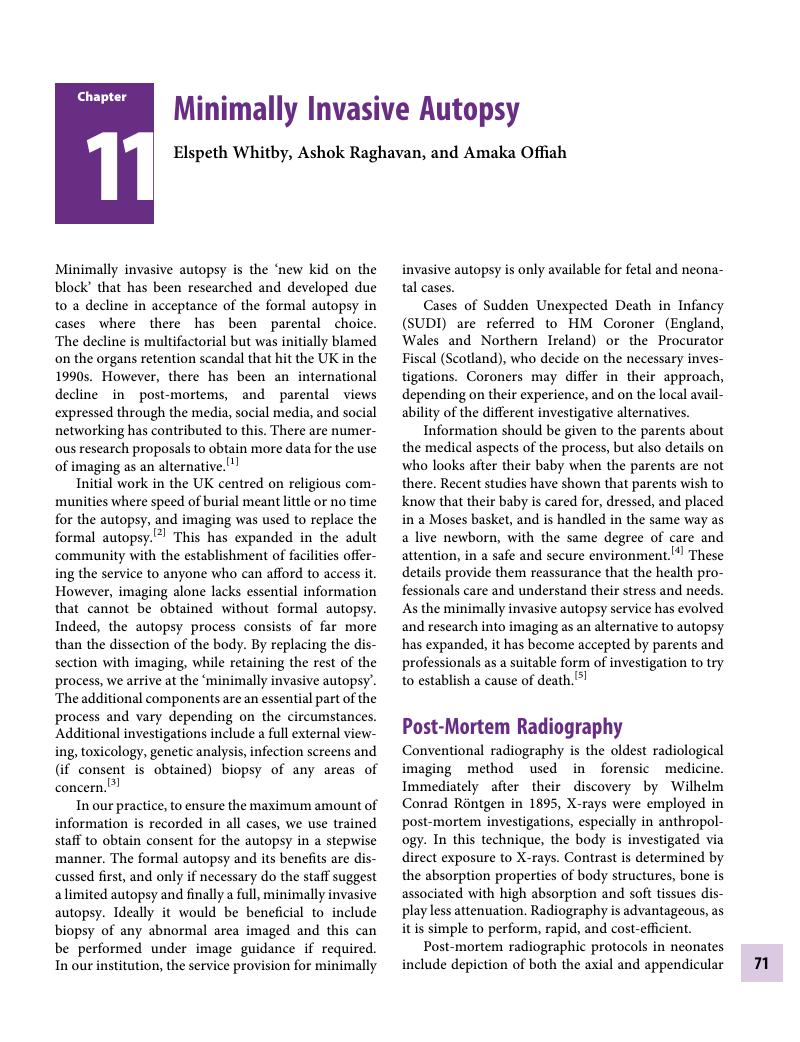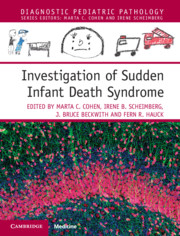Book contents
- Investigation of Sudden Infant Death Syndrome
- Diagnostic Pediatric Pathology
- Investigation of Sudden Infant Death Syndrome
- Copyright page
- Contents
- Contributors
- Foreword
- Preface
- Section 1 The History of SIDS
- Section 2 The Parents
- Section 3 Legal Framework
- Section 4 Best Practices Protocols of Investigation of Sudden Unexpected Death in Infancy and Childhood
- Chapter 7 Emergency Services: First Responders
- Chapter 8 The Home Visit
- Chapter 9 Autopsy: Current Methods and Ancillary Investigations
- Chapter 10 The Joint Forensic/Paediatric Post-mortem Examination
- Chapter 11 Minimally Invasive Autopsy
- Chapter 12 Child Death Review: an Effective Approach for the Surveillance of Sudden and Unexplained Infant Deaths in the US
- Chapter 13 Final Case Discussion and Child Death Overview Panels (CDOP) in the UK
- Section 5 Autopsy Findings
- Section 6 Epidemiology and Risk Factors
- Section 7 Pathophysiology
- Section 8 SUDI/SUID Which is Not SIDS
- Index
- References
Chapter 11 - Minimally Invasive Autopsy
from Section 4 - Best Practices Protocols of Investigation of Sudden Unexpected Death in Infancy and Childhood
Published online by Cambridge University Press: 04 June 2019
- Investigation of Sudden Infant Death Syndrome
- Diagnostic Pediatric Pathology
- Investigation of Sudden Infant Death Syndrome
- Copyright page
- Contents
- Contributors
- Foreword
- Preface
- Section 1 The History of SIDS
- Section 2 The Parents
- Section 3 Legal Framework
- Section 4 Best Practices Protocols of Investigation of Sudden Unexpected Death in Infancy and Childhood
- Chapter 7 Emergency Services: First Responders
- Chapter 8 The Home Visit
- Chapter 9 Autopsy: Current Methods and Ancillary Investigations
- Chapter 10 The Joint Forensic/Paediatric Post-mortem Examination
- Chapter 11 Minimally Invasive Autopsy
- Chapter 12 Child Death Review: an Effective Approach for the Surveillance of Sudden and Unexplained Infant Deaths in the US
- Chapter 13 Final Case Discussion and Child Death Overview Panels (CDOP) in the UK
- Section 5 Autopsy Findings
- Section 6 Epidemiology and Risk Factors
- Section 7 Pathophysiology
- Section 8 SUDI/SUID Which is Not SIDS
- Index
- References
Summary

- Type
- Chapter
- Information
- Investigation of Sudden Infant Death Syndrome , pp. 71 - 74Publisher: Cambridge University PressPrint publication year: 2019



